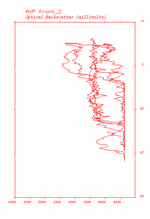
|

|
Dredge Scow Plumes and Tidal Fronts
Blacks Point Offshore Disposal Site- Saint John Harbour Approaches
Acoustic and Optical Backscatter Imaging
C.S.L. Heron - October 22nd 2003
Blacks Point Offshore Disposal Site- Saint John Harbour Approaches
Acoustic and Optical Backscatter Imaging
C.S.L. Heron - October 22nd 2003
|
John E.Hughes Clarke
Ocean Mapping Group Dept. Geodesy and Geomatics Engineering University of New Brunswick |
Russell Parrot
Geological Survey of Canada - Atlantic Bedford Institute of Oceanography Natural Resources Canada |


























































